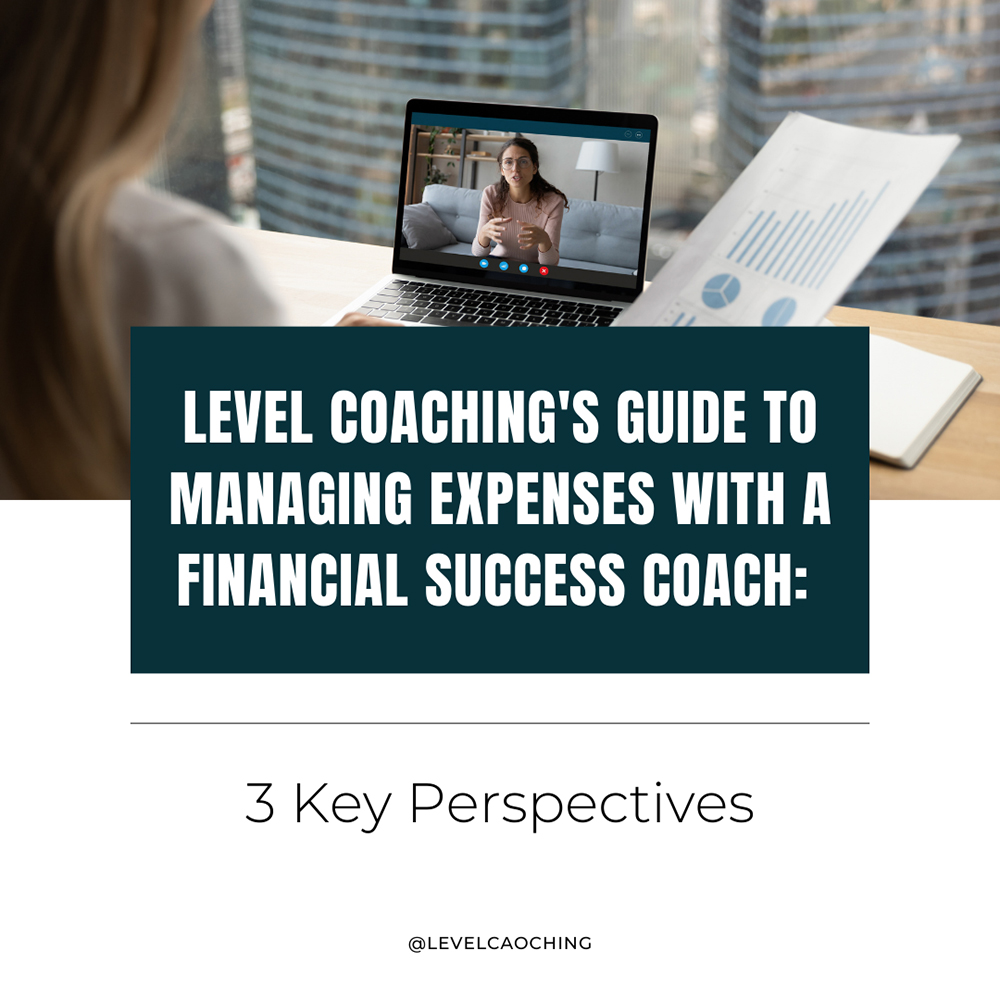
04 Jan Level Coaching’s Guide to Managing Expenses with a Financial Success Coach: 3 Key Perspectives
When pondering your expenses, what springs to mind? Perhaps it’s the regular costs like housing, nourishment, transport, or even your shopping habits and personal care routines. In the realm of budgeting, especially under the guidance of a Level Coaching Financial Success Coach, expenses are the fundamental elements of your financial plan. However, before diving into budget construction, it’s crucial to grasp not only what your expenses entail but also their distinct impact on your budget.

Fixed vs. Variable Expenses
The first distinction to make is between fixed and variable expenses. Fixed expenses, such as rent or mortgage, cell phone bills, subscriptions, insurance, daycare, and minimum debt payments, remain consistent each month. Variable expenses, on the other hand, like groceries, dining, entertainment, shopping, fuel, personal care, and ride-sharing services, fluctuate regularly.
Understanding the frequency of decisions related to these expenses is key. Decisions on fixed expenses occur less often, such as annually deciding whether to move or staying on a cell phone plan for years. Each fixed expense decision generally carries more weight. Conversely, variable expenses, though seemingly less impactful per instance, accumulate significantly over time.
For a successful budgeting strategy, focus primarily on monitoring variable expenses. Fixed expenses, being consistent, require less frequent attention, but it’s the variable expenses that often lead to overspending.

Necessary vs. Discretionary Expenses
Another vital distinction is between necessary and discretionary expenses. Necessary expenses cover the essentials: housing, utilities, food, transportation, and medical bills. Discretionary expenses, while enhancing life, are not essential, such as shopping, dining out, personal care, and entertainment.
There’s often a crossover between fixed and necessary expenses, as well as variable and discretionary ones, but they don’t always align perfectly. For instance, fixed expenses like streaming subscriptions or gym memberships are also discretionary. Understanding this distinction is crucial in applying the 50/30/20 budget rule, which involves allocating income towards needs, wants, and savings respectively.
It’s important to remember that discretionary spending is not inherently negative, despite what moral judgment might suggest.

Controllable vs. Uncontrollable Expenses
Finally, categorizing expenses as controllable and uncontrollable offers a useful perspective. Controllable expenses are those you can alter, while uncontrollable expenses are beyond your immediate influence.
This concept is particularly relevant in personal budgeting. It shifts the focus to what you can change, rather than whether an expense is necessary or not. For example, housing costs may be controllable for someone who can opt for a roommate, while another person with a recent lease on a studio apartment might view it as uncontrollable.
Concluding Insights
Evaluating your expenses through these lenses can revolutionize your approach to budgeting. It helps in pinpointing what needs tracking and where adjustments are possible, leading to a budget that is truly personalized and optimized.
Ready to refine your budget? Explore our Level Coaching approved budgeting tools!

